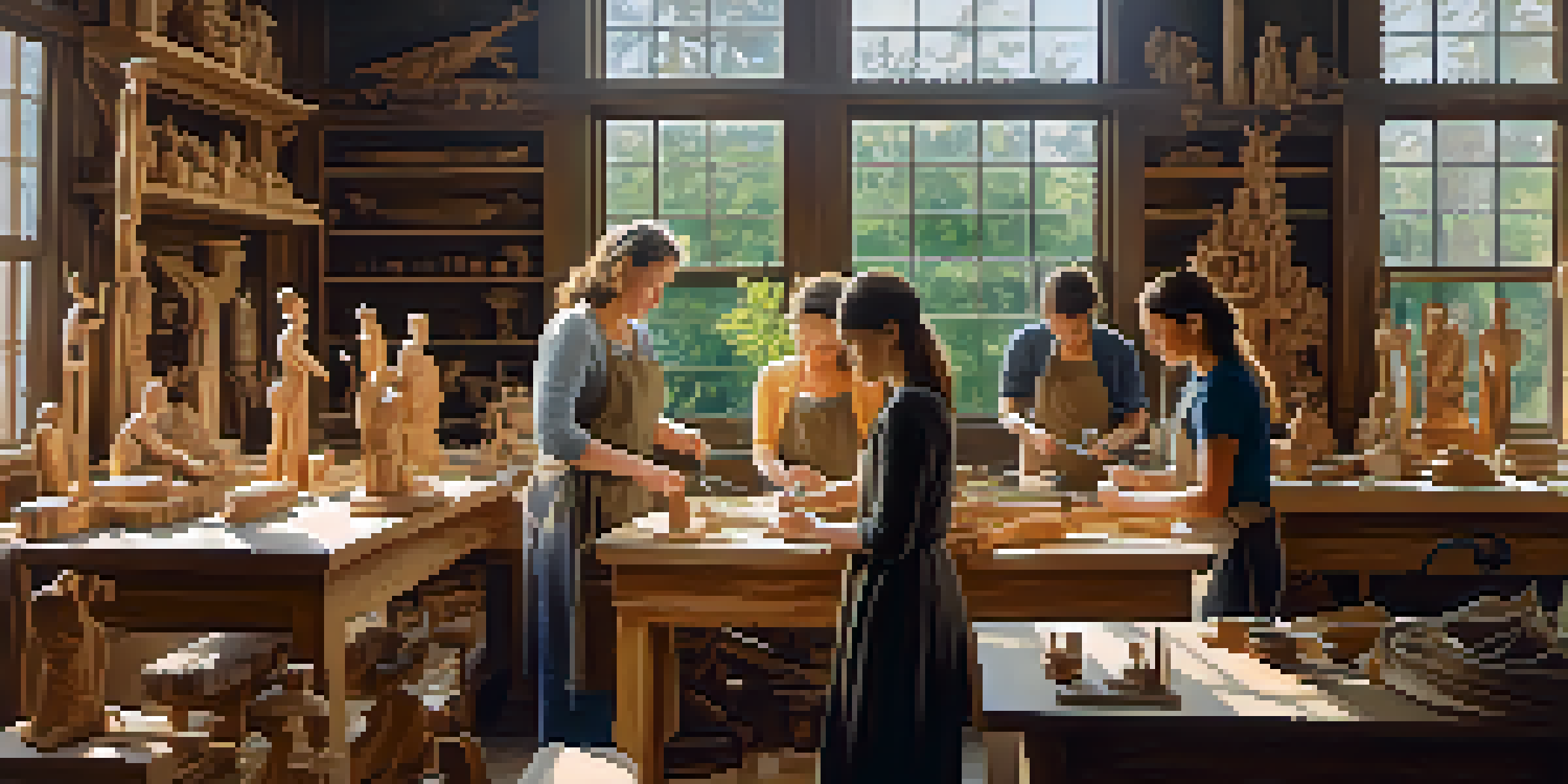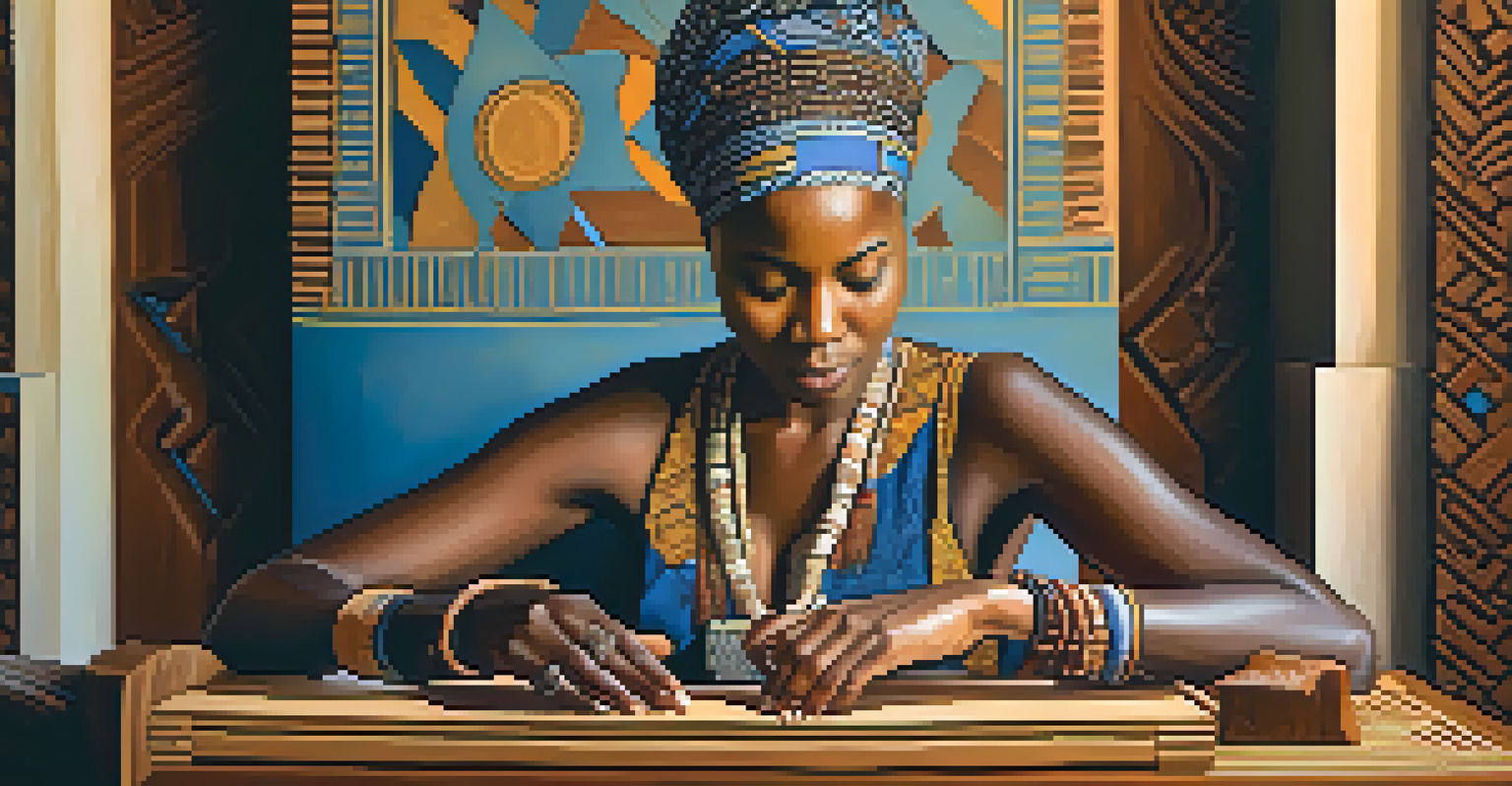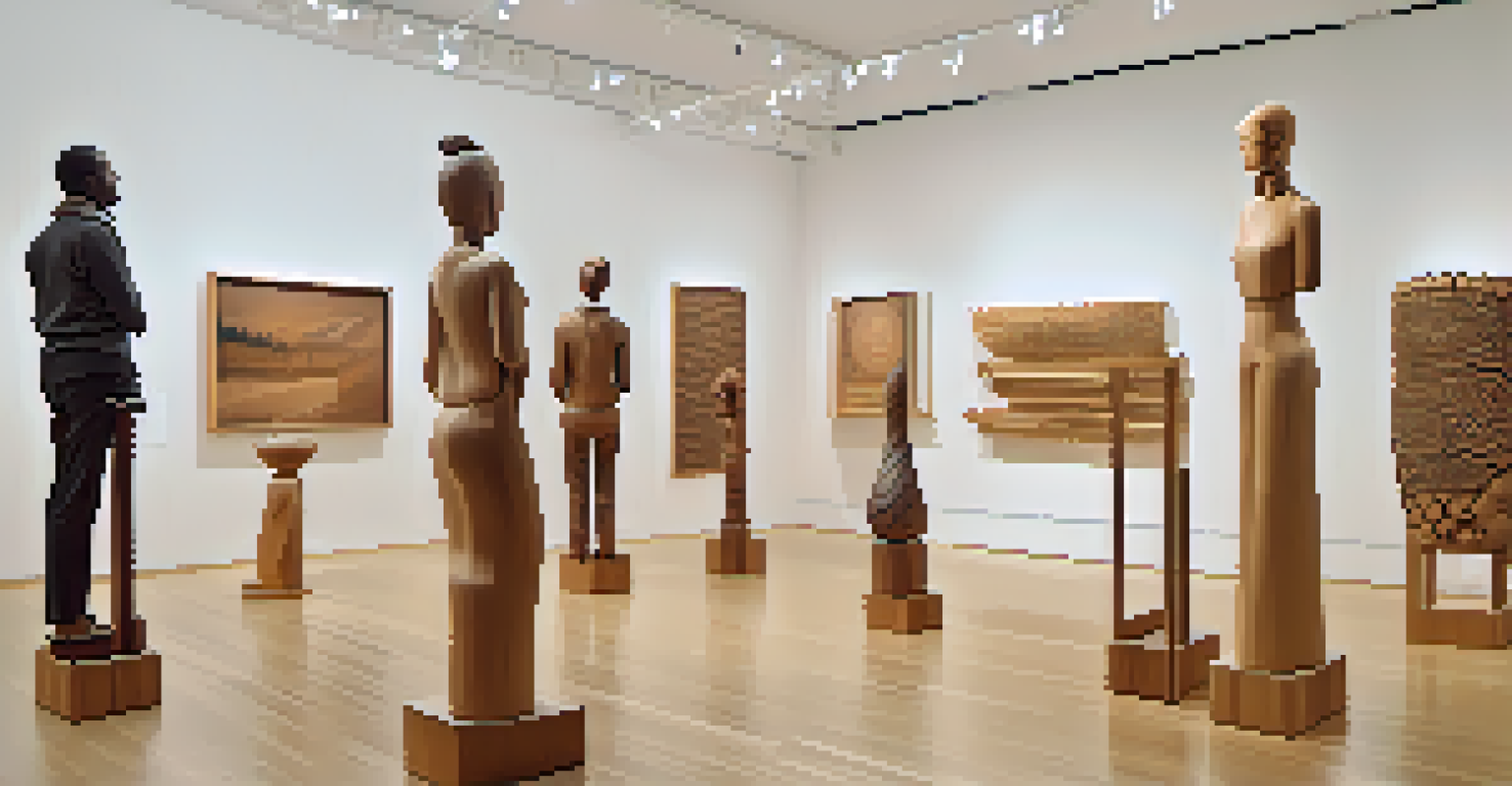Historical Perspectives on Gender in Carving Traditions

The Origins of Carving Traditions and Gender Roles
Carving, as an ancient art form, has roots that stretch back thousands of years. Traditionally, carving was often viewed as a male-dominated craft, with men taking on the role of primary artisans. This perspective was influenced by various societal norms that associated physical labor and artistry with masculinity, leaving women on the outskirts of these practices.
Art is not what you see, but what you make others see.
However, examining early societies reveals that women did play crucial roles in carving, especially in domestic or communal settings. For instance, in many Indigenous cultures, women were responsible for creating ceremonial objects or tools, showcasing their skills and artistry. These contributions challenge the narrative that carving was exclusively a male endeavor.
As we delve deeper into history, it becomes clear that the division of roles in carving is not as black and white as it seems. The complexity of gender roles within carving traditions highlights the importance of recognizing women's contributions, which have often been overlooked or underestimated.
Cultural Influences on Gender and Carving Techniques
Cultural context significantly shapes how carving techniques are passed down through generations, often impacting who participates in the craft. In many cultures, the transmission of skills has been male-centric, with fathers teaching sons the intricacies of the trade. This has led to a perception that carving is inherently a male skill, reinforcing gender stereotypes.

Conversely, there are cultures where women are the primary carvers, such as in certain African tribes where female artisans create intricate wooden sculptures. These examples illustrate that while cultural norms may dictate gender roles, they can also empower women to excel in carving traditions. This duality showcases the fluidity of gender roles in various societies.
Women’s Role in Carving History
Despite being traditionally overlooked, women have played significant roles in carving traditions throughout history.
Understanding these cultural influences allows us to appreciate the diverse landscape of carving traditions globally. It underscores the need to celebrate and elevate the voices of all artisans, regardless of gender, who contribute to the rich tapestry of this art form.
The Impact of Colonialism on Gender and Carving
Colonialism has profoundly affected carving traditions worldwide, often erasing or altering indigenous practices. As colonial powers imposed their own cultural values, they frequently sidelined women artisans. This resulted in a loss of traditional knowledge and techniques that women had preserved for generations.
The only way to do great work is to love what you do.
The appropriation of native carving styles by colonial artists further complicated gender dynamics, leading to a narrative that favored male artists and undervalued female contributions. This historical context is crucial for understanding the current landscape of carving traditions, where many women continue to fight for recognition.
By examining the impact of colonialism on gender roles in carving, we can better appreciate the resilience of female artisans. Their struggle to reclaim their place in this art form is not just about carving but also about cultural identity and heritage.
Modern Carving Movements and Gender Representation
In recent years, there has been a noticeable shift towards greater gender representation in carving movements. Women are increasingly taking center stage, showcasing their artistry in galleries and exhibitions worldwide. This change reflects a growing recognition of the importance of diverse voices in the art community.
Many contemporary female carvers are reinterpreting traditional techniques, adding their unique perspectives to the craft. This blending of old and new not only revitalizes carving traditions but also challenges the traditional narratives surrounding gender. These artists are carving out their own spaces in a historically male-dominated field.
Cultural Influences on Gender Roles
Cultural contexts shape who participates in carving, highlighting both male-centric practices and empowering female artisans.
The rise of social media has also played a significant role in amplifying the work of female carvers. Platforms like Instagram allow artisans to share their creations and connect with broader audiences, fostering a supportive community that champions inclusivity in the arts.
Case Studies: Notable Women Carvers in History
Examining the lives and works of notable women carvers reveals the often-unrecognized contributions of female artisans. For example, in the early 20th century, Japanese woodblock printmaker and carver, Katsukawa Shunko, gained acclaim for her intricate designs, challenging the male-dominated art world of her time.
Similarly, in Africa, women like Miriam Makeba have used traditional carving to express cultural narratives, highlighting the significance of women's perspectives in preserving heritage. Their stories serve as powerful reminders of the crucial role women have played in carving traditions throughout history.
These case studies not only celebrate individual achievements but also illustrate the broader impact of women in carving. They inspire future generations to continue the tradition, emphasizing that artistry knows no gender.
The Role of Education in Empowering Female Carvers
Education plays a pivotal role in empowering women in the carving arts. Various programs and workshops are now dedicated to teaching carving skills to aspiring female artisans, providing them with the tools to succeed in a traditionally male-dominated field. This shift is essential for fostering a new generation of women carvers.
By offering mentorship and resources, these educational initiatives help young women develop their artistic voices. They not only learn the technical aspects of carving but also gain confidence in their abilities, encouraging them to pursue their passion fearlessly. This empowerment is crucial for challenging existing gender norms.
Future of Gender in Carving
The movement towards greater gender representation in carving is growing, driven by educational initiatives and emerging technologies.
Moreover, educational programs often emphasize the importance of storytelling in carving, allowing women to incorporate their experiences and perspectives into their work. This approach enriches the craft and reinforces the notion that carving is a dynamic form of expression that transcends gender boundaries.
Looking Ahead: The Future of Gender in Carving Traditions
As we look to the future, the conversation around gender in carving traditions continues to evolve. There is a growing awareness of the need for inclusivity and representation in the art world, with more platforms dedicated to showcasing female artisans. This shift is encouraging and signals a promising future for gender equality in carving.
Emerging technologies, such as digital carving tools, are also reshaping the landscape of the craft. These innovations provide women with new opportunities to explore their creativity and express their identities in ways that were previously unimaginable. As barriers diminish, more women are likely to enter the field, further enriching the art of carving.

Ultimately, the future of gender in carving traditions hinges on the collective efforts of the community. By continuing to support and uplift female artisans, we can ensure that the rich history of carving reflects the diverse contributions of all its practitioners.